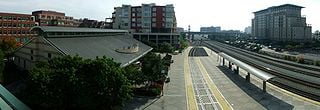Americans, more and more, are taking to the rails. In fact, in 2012, those riding Amtrak, the national passenger rail network, swelled to 31 million – a record. Relative to 1997’s Amtrak ridership stats, it’s an increase of 55 percent.

Curtis Tate of McClatchy Newspapers in “Largest metro areas lead growth in Amtrak ridership, report concludes,” expressed in writing, “…much of that growth was driven by the nation’s 100 largest metro areas, according to a report by the Brookings Institution.”
Amtrak’s patronage numbers are soaring. At the same time, fewer miles have been logged behind the wheel. And it is a trend that doesn’t appear to be fleeting.
Angie Schmitt, in “For Eighth Year in a Row, the Average American Drove Fewer Miles in 2012” at DC.StreetsBlog.org on Feb. 27, 2013 noted: “Last year, for the eighth year in a row, vehicle miles traveled ticked down on a per-capita basis. The average American drove 37 fewer miles in 2012 than in 2011 — a 0.4 percent drop, according to new data from FHWA [the Federal Highway Administration]. It’s a small but significant decrease, continuing the downward slide of per-capita VMT that began in 2004, well before the economy faltered.”
By the numbers, according to FHWA data, in 1987 and 2007, American vehicle miles traveled were roughly 1.924 trillion and 3.031 trillion, respectively. Contrarily, between the latter year and 2011, miles driven dropped to approximately 2.929 trillion with a slight increase to nearly 2.939 trillion in 2012, a 0.3 percent increase that can be attributed to population growth, according to Schmitt.
Based on State Smart Transportation Initiative data, on a per capita basis, Americans were averaging around 8,000 miles per year in 1987 to north of 10,000 in 2004. Then the tables turned. In 2012, average per-capita VMT dipped to below 9,500.
Schmitt, meanwhile, remarked, “Experts attribute the reversal to a variety of factors including the gradual retirement of the baby boomer generation, volatile gas prices, decreased interest in driving by millennials, and the increasing popularity of walkable neighborhoods.”
Regarding the train-riding numbers rise, Tate added: “The 55 percent increase in riders in the past 15 years outpaced the growth in other travel modes, according to Brookings. It far exceeded a 16.5 percent increase in miles traveled by car, a 20 percent increase in airline passengers and even a 26.4 percent increase in transit riders.”
What all this tells me is that more and more people are riding trains and train-riding is becoming a more and more preferred method of transportation as time goes on. That is quite interesting considering Americans were abandoning passenger rail travel in droves all starting circa the 1930s.
With road miles logged what they are and with more and more folks taking to the rails, this has got to mean fewer pollutants being pumped into the air. There are no two ways about it!
– Alan Kandel